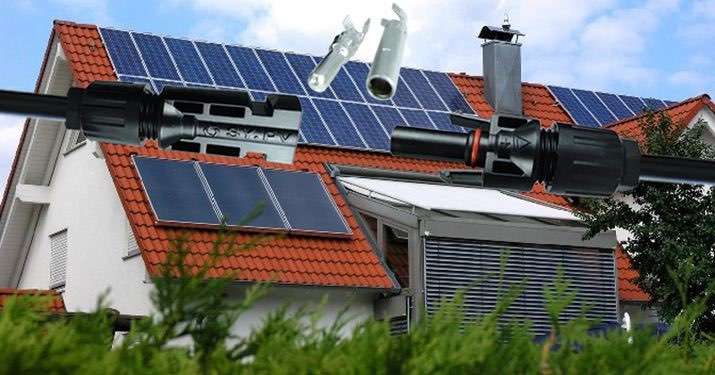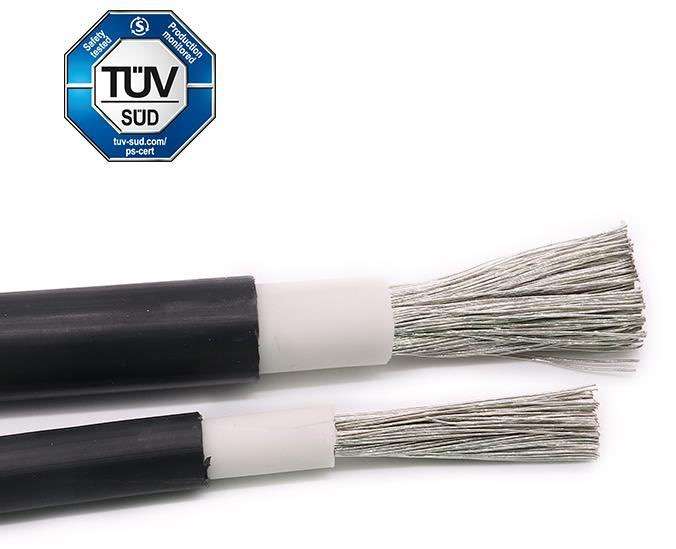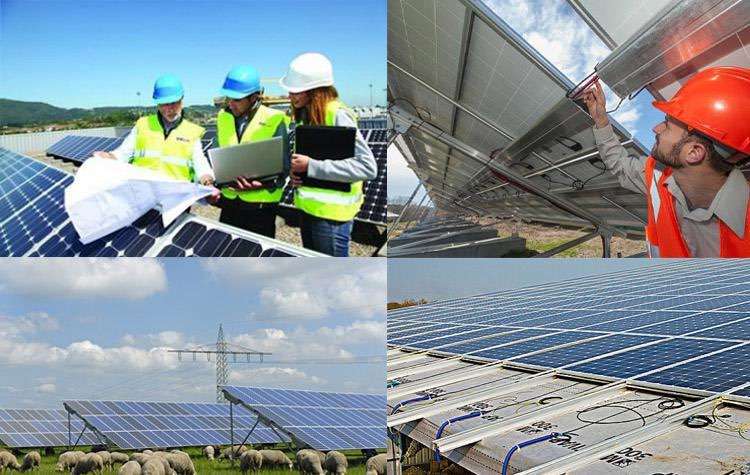 Author: Joey Wan
Author: Joey Wan  December 22,2021
December 22,2021
Solar photovoltaic technology will become one of the future green energy technologies, solar or photovoltaic (PV) applications in the world is increasingly widespread, investors are actively building plants, planning to produce solar modules for global sales. But for now, many countries are still learning.
Building cost-effective, profitable photovoltaic plants represents the most important goal and core competence of all solar manufacturers. In fact, profitability depends not only on the efficiency or performance of the solar modules themselves, but also on a series of components seemingly unrelated to the modules. However, all these components (such as photovoltaic cables, solar connectors, photovoltaic junction boxes) should be selected according to the long-term investment objectives of the tenderee. The high quality of the selected components prevents the solar system from becoming unprofitable due to high repair and maintenance costs.

For example, the wiring system that connects photovoltaic modules to inverters is not usually considered a critical component. However, failure to use dedicated solar dc cables for solar applications will affect the service life of the entire system. In fact, solar systems are often used in harsh environmental conditions, such as high temperatures and ultraviolet radiation. In Europe, sunny days will result in on-site temperatures of up to 100°C for solar systems. Currently, PVC, rubber, TPE and high quality cross-linking materials are available, but unfortunately rubber cables rated at 90°C and even PVC cables rated at 70°C are often used outdoors, which obviously can greatly affect the service life of the system.
The solar dc cable is an electron-beam cross-linked cable rated at 120°C and is designed to withstand harsh weather conditions and mechanical shocks in the equipment in which it is installed. According to the international standard IEC216, photovoltaic cables are designed to last 8 times longer than rubber cables and 32 times longer than PVC cables in outdoor environments. These solar dc cables and components not only provide optimum weather resistance, uv and ozone resistance, but also withstand a wide range of temperature variations (e.g., from -- 40°C to 125°C). To deal with the potential hazards caused by high temperatures, manufacturers tend to use double insulated rubber sheathed solar dc cables. However, standard versions of these photovoltaic cables are only allowed for use at maximum operating temperatures of 60°C. In Europe, rooftop temperatures can be measured at 100°C. The solar dc cable is rated at 120°C(20,000 hours of service). This rating is equivalent to 18 years of service at a continuous temperature of 90°C; When the temperature is below 90°C, the service life is longer. Generally, the service life of solar equipment is required to reach more than 20 to 30 years. For all these reasons, it is necessary to use dedicated photovoltaic cables and components in solar systems.

In fact, solar dc cables can be routed on sharp edges of the roof structure during installation and maintenance, while the photovoltaic cables are subjected to stress, bending, tension, cross-tensile loads and strong impact. If the photovoltaic cable sheath is not strong enough, the insulation layer of the cable will be seriously damaged, which will affect the service life of the cable, or lead to short circuit, fire and human injury hazard.
Radiation cross - linked material, with high mechanical strength. The cross-linking process changes the chemical structure of polymers, converts fusible thermoplastic materials into non-fusible elastomer materials, and the cross-linking radiation significantly improves the thermal, mechanical and chemical properties of solar dc cable insulation materials.
1. Dc resistance The dc resistance of the conductor core of the finished solar dc cable shall not be greater than 5.09 Ω /km at 20℃.
2. Submerged voltage test The finished photovoltaic cable (20m) will not break down after 5min voltage test (AC 6.5kV or DC 15kV) after immersing in water at (20±5)℃ for 1h.
3. The sample with long-term DC voltage resistance is 5m long and placed in distilled water containing 3% sodium chloride (NaCl) at (85±2)℃ for (240±2)h, with both ends exposed to water for 30cm. 0.9KV dc voltage is added between the core and the water (the conductive core is connected to the positive pole and the water is connected to the negative pole). After the sample was taken out, the immersion voltage test was carried out. The test voltage was AC 1KV and no breakdown was required.
4. Insulation resistance. The insulation resistance of the finished photovoltaic cable shall be no less than 1014 Ω •cm at 20℃, and no less than 1011 Ω •cm at 90℃.
5. The surface resistance of the sheath shall be no less than 109Ω.

It is widely used in electrical installation of indoor and outdoor solar energy equipment.
Characteristics: low smoke halogen free, excellent cold resistance, uv resistance, ozone resistance and weather resistance. Flame retardant, cut resistance, penetration resistance.
Ambient temperature: -40℃ ~ +90℃.
Maximum temperature of conductor: 120℃(200℃ for short-circuit within 5s).
Rated voltage: AC0.6/1kV DC1.8kV
Expected use life: 25 years
Compared to the normal PVC cable or rubber cable, the photovoltaic cable has lots of unique characteristics. Consequently there are lots of requires on manufacturers or suppliers, firstly if you are a buyer or purchaser, you should force your supplier has the TUV certification which has been the most authoritative prove on solar dc cable.
Next you should you confirm that your supplier can have a excellent XLPE insulation quality control ability. Because the environmental stress the photovoltaic cable will meet with, the XLPE material is so important. However in general, the solar dc cable manufacturers don't manufacture the XLPE insulation material, they purchase from the professional plastic factory who focus on the XLPE materials production. If your supplier can't have enough ability to have a excellent XLPE material, you should say no to them, cause on excellent XLPE insulation materials, no better solar dc cable.
JZD Cable obtained the TUV certification in 2019 year. We have exported to 9 countries including Australia, Israel, Japan and so on. Welcome to contact us for solar dc cable inquiry.
Previous Post: Why Royal Cord Is So Popular In The Philippines? Especially 5.5 MM2.
Next Post: 2 CRITICAL DIFFERENCES BETWEEN UL1015 AND UL1007 AWG22
